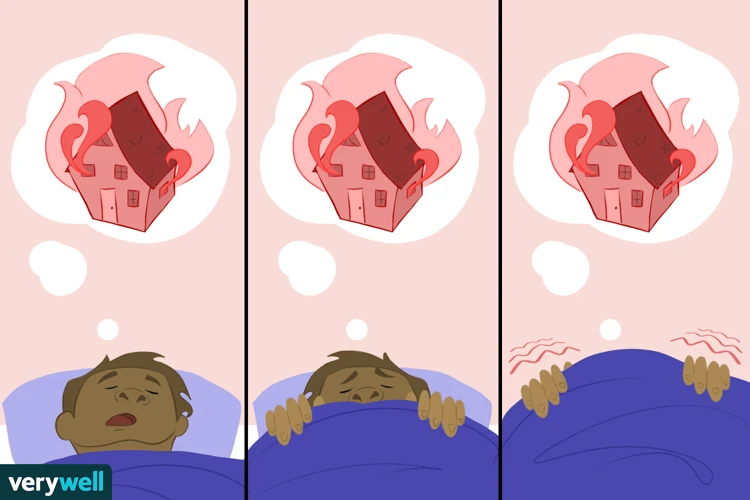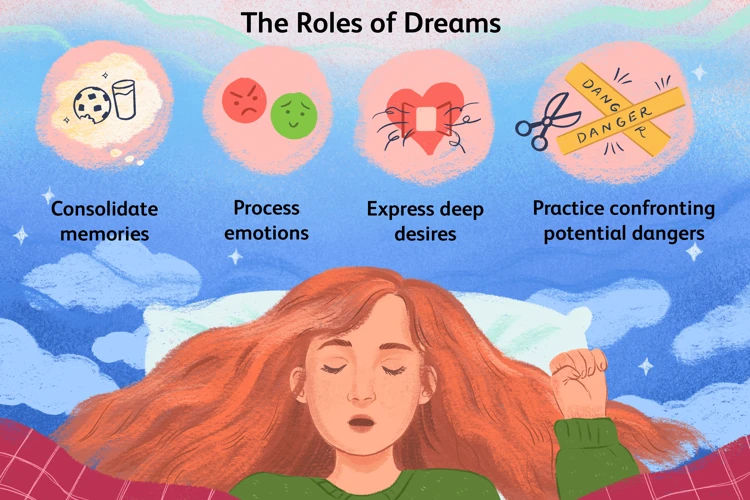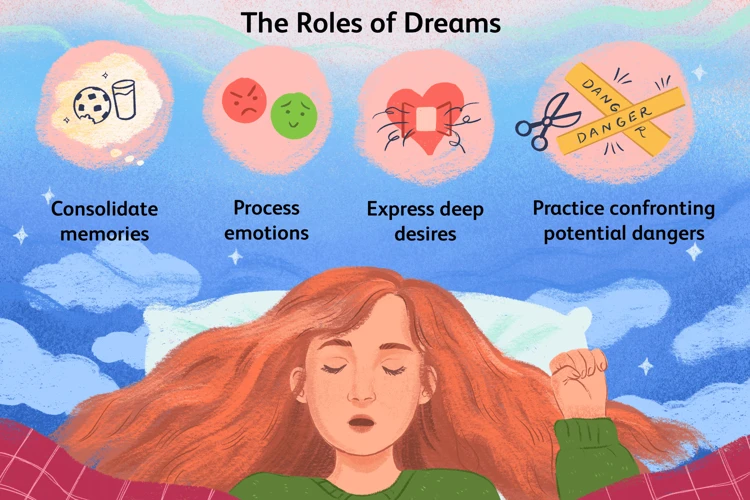Have you ever been jolted awake in the middle of the night by the terrified cries of your child? As a parent, it can be heart-wrenching to see your little one frightened by nightmares. While nightmares are a common occurrence in children, understanding their causes and effects can help you provide the support your child needs. In this comprehensive guide, we will navigate through the world of nightmares in children, exploring the common themes, causes, and impact of nightmares. We will also offer practical strategies to help your child cope with nightmares and discuss when it may be necessary to seek professional help. So, grab a cup of tea and let’s embark on this journey to help you become your child’s superhero when it comes to conquering nightmares.
What are Nightmares?

Nightmares are disturbing and vivid dreams that can cause fear, anxiety, and even terror in children. These intense dreams occur during rapid eye movement (REM) sleep, which is the stage of sleep in which most dreaming occurs. Unlike night terrors, which typically happen in the non-REM phase of sleep, nightmares often involve a detailed narrative that the child can recall upon waking up. During a nightmare, children may experience feelings of being chased, falling, or being in danger. These dreams can be accompanied by physical symptoms such as sweating, rapid heartbeat, and even bedwetting.
Nightmares are a normal part of childhood development and are most commonly experienced by children aged 3 to 6. However, they can occur at any age. While occasional nightmares are not typically a cause for concern, persistent and recurring nightmares may indicate underlying issues that need to be addressed. It’s important to note that nightmares can vary in intensity and duration, and each child may have their own unique experiences.
To learn more about managing nightmares and tips for helping your child cope, you can refer to our article on managing nightmares. Understanding the causes and triggers of nightmares is crucial in providing appropriate support. For more information on the causes of nightmares, please visit our article on causes of nightmares. Additionally, it’s worth noting that there is a connection between nightmares and sleep disorders. If you’re curious to learn more about this connection, you can explore our article on nightmares and sleep disorders. Understanding the nature of nightmares and their impact on children is essential in helping them navigate through their fears and promote healthy sleep patterns.
Common Themes in Children’s Nightmares

Children’s nightmares can manifest in a variety of themes, often reflecting their age, developmental stage, and personal experiences. While the specific content of nightmares can be unique to each child, there are some common themes that tend to recur. Understanding these themes can help parents better support their children when they have nightmares.
1. **Monsters and Creatures**: Many children’s nightmares feature frightening creatures such as monsters, ghosts, vampires, or zombies. These imaginary beings can evoke feelings of fear and danger in children’s dreams.
2. **Being Chased or Attacked**: The sensation of being chased, attacked, or hunted is a recurring theme in children’s nightmares. Children may dream of being pursued by animals, strangers, or even fictional characters.
3. **Falling or Being Trapped**: Falling from great heights or being trapped in confined spaces are common themes that evoke feelings of powerlessness and vulnerability. Children may dream of falling down stairs, off cliffs, or being trapped in dark and cramped places.
4. **Disasters and Accidents**: Nightmares may involve natural disasters like earthquakes or floods, or accidents such as car crashes or fires. These dreams can trigger feelings of danger and helplessness.
5. **Losing a Loved One**: Children may experience nightmares where they lose a family member, friend, or pet. These dreams can be emotionally distressing and may reflect underlying fears of separation or loss.
6. **Supernatural Experiences**: Some children’s nightmares involve paranormal phenomena, such as encountering ghosts or experiencing supernatural events. These dreams can be particularly unsettling for children.
7. **School or Performance Anxiety**: As children grow older, nightmares related to school or performance pressures may arise. These dreams can center around exams, presentations, or being ridiculed by classmates.
It’s important to remember that themes in nightmares can vary significantly from child to child. Paying attention to the content of your child’s nightmares can provide insights into their fears and concerns, allowing you to offer appropriate support and reassurance.
Causes of Nightmares in Children

Nightmares in children can be caused by a variety of factors. One possible cause is a child’s vivid imagination. Their active minds and creative thoughts can manifest in the form of scary and unsettling dreams. Another common cause is stress and anxiety. Children may be experiencing pressure at school, changes in their routine, or even conflicts within their family, which can contribute to the occurrence of nightmares. Additionally, traumatic experiences, such as the loss of a loved one or exposure to a frightening event, can also trigger nightmares in children. It’s important to remember that each child is unique, and the causes of their nightmares may vary. By understanding the potential factors that contribute to nightmares, parents can better address their child’s needs and provide appropriate support.
Vivid Imagination
Children with a vivid imagination often have a heightened ability to create and visualize detailed scenarios, which can contribute to the occurrence of nightmares. Their creative minds may generate vivid and sometimes disturbing images during sleep. This active imagination can be triggered by various factors, such as exposure to scary stories, movies, or even real-life events. These experiences can leave a lasting impression on a child’s mind, resulting in the manifestation of these images in their dreams.
It is important to note that having a vivid imagination is not necessarily a negative trait. In fact, it can be a sign of creativity and cognitive development. However, it does mean that children with vivid imaginations may have a greater likelihood of experiencing nightmares. Their ability to conjure up vibrant and sometimes frightening scenarios can amplify their dream experiences.
To support children with a vivid imagination and help alleviate nightmares, it is essential to create a safe and secure sleeping environment. This can be achieved by establishing a regular bedtime routine, which provides a sense of consistency and stability. Engaging in calming activities before bed, such as reading soothing stories or practicing relaxation techniques, can help quiet the mind and promote more peaceful sleep.
Using visual aids, such as dream catchers or night lights, can also be beneficial in reassuring children and easing their fears. These items can serve as tangible reminders that their sleep environment is safe and protected. Additionally, encouraging positive imagery through bedtime stories or imaginative play during the day can help shift the focus from negative to positive thoughts before sleep.
By understanding the role of a vivid imagination in nightmares, parents can take proactive steps to create a reassuring sleep environment and provide support to their children.
Stress and Anxiety
Stress and anxiety can play a significant role in causing nightmares in children. Children, like adults, experience stress and anxiety in their daily lives, and these emotions can manifest in their dreams. Whether it’s starting a new school year, a change in the family dynamic, or even minor everyday stressors, these factors can trigger nightmares.
Here are some ways stress and anxiety can contribute to nightmares:
- Emotional Vulnerability: When children are feeling stressed or anxious, they may become emotionally vulnerable. This vulnerability can make them more susceptible to nightmares, as their fears and worries are more likely to surface during sleep.
- Heightened Imaginations: Children have incredibly vivid imaginations, and when they are stressed or anxious, their minds can create elaborate and sometimes frightening scenarios during dreams. These scenarios may involve their fears or worries manifesting in a symbolic or exaggerated form.
- Nighttime Ruminations: Children who are experiencing stress or anxiety may have racing thoughts before bedtime. These ruminations can continue into their dreams, leading to nightmares. The content of their dreams may revolve around their worries or concerns.
- Sleep Disruption: Stress and anxiety can interfere with a child’s overall sleep quality. When their sleep is disturbed, it can disrupt the normal sleep cycle, including the REM stage where dreaming occurs. As a result, children may experience more vivid and intense dreams, including nightmares.
It is essential for parents to recognize and address any sources of stress or anxiety in their child’s life. Open communication, reassurance, and providing a nurturing and supportive environment can help alleviate these emotional burdens. Implementing relaxation techniques, such as deep breathing exercises or guided imagery, before bedtime can also help reduce stress and anxiety levels, decreasing the likelihood of nightmares occurring. By addressing the underlying stress and anxiety, parents can empower their children to sleep more peacefully and reduce the frequency of nightmares.
Traumatic Experiences
Traumatic experiences can be a significant factor in causing nightmares in children. Children who have experienced or witnessed a traumatic event, such as a car accident, natural disaster, or physical or emotional abuse, may have nightmares as a way of processing and reliving the distressing event. These nightmares can be vivid and often involve themes related to the traumatic experience.
Here are some key points related to traumatic experiences and nightmares:
1. Post-Traumatic Stress Disorder (PTSD): Children who have been diagnosed with PTSD may experience frequent nightmares as one of the symptoms of the disorder. These nightmares may be reenactments or representations of the traumatic event and may occur repeatedly.
2. Nightmare Repetition: Children who have undergone a traumatic experience may have nightmares in which the same distressing event is repeated. This repetition can be distressing for the child and may significantly impact their overall well-being.
3. Emotionally Charged Content: Nightmares resulting from traumatic experiences often have emotionally charged content. Children may experience intense fear, anxiety, or panic during these dreams, sometimes waking up in a state of distress.
4. Anxiety and Hyperarousal: Traumatic experiences can lead to heightened anxiety and a state of hyperarousal in children, making them more prone to nightmares. The constant state of alertness can intrude upon their sleep and trigger vivid, frightening dreams.
5. Recovery Process: Processing and overcoming a traumatic experience is crucial for reducing the frequency and intensity of nightmares in children. Creating a supportive environment and seeking professional help, such as therapy or counseling, can aid in the recovery process and help children cope with their nightmares.
It’s important to remember that traumatic experiences affect children differently, and not all children who experience trauma will have nightmares. However, if your child has experienced a traumatic event and is struggling with frequent nightmares, it may be beneficial to consult with a healthcare professional or therapist who specializes in trauma to provide appropriate support and guidance.
Impact of Nightmares on Children

Nightmares can have a significant impact on children, affecting both their sleep patterns and emotional well-being. One of the primary effects of nightmares is disturbed sleep patterns. When children experience nightmares, they may wake up frequently during the night, leading to fragmented and restless sleep. This can result in daytime fatigue, irritability, and difficulty concentrating. Nightmares can also cause emotional distress in children. The vivid and terrifying nature of these dreams can leave children feeling fearful, anxious, and unsettled, even after they wake up. They may experience lingering feelings of fear and unease throughout the day, making it challenging for them to relax and enjoy their daily activities. It is crucial for parents to understand and address the impact of nightmares on their children and provide the necessary support to help them overcome these distressing experiences.
Disturbed Sleep Patterns
Disturbed sleep patterns are a common consequence of nightmares in children. When a child experiences a nightmare, it can disrupt their sleep, causing frequent awakenings throughout the night. These awakenings can lead to difficulty falling back asleep, resulting in a fragmented and restless night of sleep. As a result, children may feel tired and irritable during the day, impacting their overall well-being.
The disrupted sleep caused by nightmares can also create a negative cycle. When children anticipate having another nightmare, they may develop anxiety around bedtime, making it challenging for them to relax and fall asleep. This heightened anxiety can further contribute to disturbed sleep patterns, perpetuating the cycle of nightmares and sleep disruption.
In addition to the immediate effects of disturbed sleep, it’s important to recognize that chronic sleep disruptions can have long-term consequences on a child’s health and development. Lack of quality sleep can impair concentration, memory, and cognitive function, affecting their performance at school and in other activities. It can also lead to behavioral issues, mood swings, and even physical health problems.
To help your child overcome disturbed sleep patterns caused by nightmares, it is essential to address the underlying causes of their nightmares and create a safe and soothing sleep environment. Implementing a consistent bedtime routine, such as reading a calming book or engaging in relaxation techniques, can help promote better sleep habits. Additionally, providing reassurance and open communication about their nightmares can help alleviate anxiety and provide a sense of safety and security.
By understanding the impact of disturbed sleep patterns on children, parents can take proactive steps to support their child’s sleep and overall well-being. Remember, each child is unique, and finding strategies that work best for them may require some trial and error. With patience and persistence, you can help your child establish healthy sleep patterns and overcome the challenges posed by nightmares.
Emotional Distress
Emotional distress is one of the significant impacts of nightmares on children. Nightmares can evoke intense emotions such as fear, sadness, and anxiety in young minds. After experiencing a nightmare, children may wake up feeling overwhelmed and distressed, making it difficult for them to calm down and go back to sleep. The vivid and often scary content of nightmares can leave a lasting impression on a child’s emotional well-being, leading to daytime distress and mood changes.
Children who frequently experience nightmares may develop a fear of going to sleep or anxiety around bedtime. They may also exhibit behavior changes such as clinginess, irritability, or difficulty concentrating during the day. The emotional distress caused by nightmares can disrupt a child’s overall mood, making them more susceptible to stress and impacting their ability to function optimally.
As a parent, it is crucial to acknowledge and validate your child’s feelings of emotional distress caused by nightmares. Offer comfort and reassurance, reminding them that it was just a dream and that they are safe. Encourage open communication about their fears and feelings, creating a safe space for them to express themselves. Engaging in calming activities before bedtime, such as reading a book or practicing relaxation techniques, can help alleviate some of the emotional distress associated with nightmares.
If the emotional distress caused by nightmares persists or begins to interfere with your child’s daily life and well-being, it may be beneficial to seek professional help. A child psychologist or pediatrician can provide guidance and support in helping your child manage their emotions and develop coping strategies specific to their needs. Remember, addressing and supporting your child’s emotional distress caused by nightmares is an essential part of helping them feel safe, secure, and emotionally balanced.
How to Help Your Child with Nightmares

When it comes to helping your child with nightmares, there are several strategies you can employ to provide comfort and support. Establishing a consistent bedtime routine can create a sense of security and calmness before sleep. This routine may include activities such as reading a bedtime story or engaging in relaxation exercises. Creating a safe sleeping environment is also crucial, ensuring that the room is quiet, dark, and free from scary or stimulating elements. Encouraging your child to talk about their nightmares can help them process their fears and anxieties. Reassure them that they are safe and offer comforting words of validation. Teaching relaxation techniques, such as deep breathing or visualization, can empower your child to manage their anxiety when bedtime approaches. However, if your child’s nightmares persist or significantly affect their daily life, it may be necessary to seek professional help. Always trust your parental instincts and prioritize your child’s emotional well-being.
Establish a Bedtime Routine
A consistent bedtime routine can play a significant role in helping your child manage nightmares and promote better sleep. Here are some practical steps you can take to establish a bedtime routine:
1. Set a consistent bedtime: Determine a specific time for your child to go to bed each night and stick to it. Consistency helps regulate their internal body clock and signals to their brain that it’s time to wind down and prepare for sleep.
2. Create a calming pre-bedtime routine: Engage in activities that promote relaxation and create a peaceful atmosphere. This may include reading a book together, taking a warm bath, or practicing gentle stretching or deep breathing exercises.
3. Limit stimulating activities: Avoid activities that are mentally or physically stimulating close to bedtime. This includes watching TV or using electronic devices, as the blue light emitted from screens can interfere with sleep patterns.
4. Make the bedroom a sleep-friendly environment: Ensure that your child’s bedroom is quiet, dark, and comfortable. Use soft lighting or a nightlight if your child is afraid of the dark. Consider using blackout curtains or a white noise machine to minimize distractions.
5. Encourage relaxation techniques: Teach your child calming techniques to help them relax before sleep. This can include deep breathing exercises, progressive muscle relaxation, or guided imagery. A relaxed body and mind are less likely to experience nightmares.
6. Provide comfort objects: Allow your child to have a favorite stuffed animal, blanket, or special toy that provides comfort and a sense of security. These items can help alleviate anxiety and promote better sleep.
7. Offer reassurance and support: Talk to your child about their fears or worries and reassure them that they are safe. Encourage them to express their feelings and address any concerns they may have. Knowing they have your support can help alleviate anxiety and reduce the likelihood of nightmares.
By establishing a consistent bedtime routine, you create a comforting and predictable environment for your child, which can significantly reduce the occurrence of nightmares. Stick to the routine even on weekends and during vacations to maintain a sense of stability. Remember, it may take some time for your child to adjust to the new routine, so be patient and persistent.
Create a Safe Sleeping Environment
Creating a safe sleeping environment is crucial in helping your child feel secure and reduce the likelihood of nightmares. Here are some strategies to consider:
- Comfortable Bedding: Ensure that your child’s bed is comfortable and inviting. Use soft, cozy bedding and a comfortable mattress that provides adequate support.
- Dimmed Lighting: Keep the bedroom dimly lit or use a nightlight to create a soothing environment. This can help alleviate any fears of the dark and make your child feel more secure.
- No Scary Imagery: Avoid having any scary or unsettling imagery in your child’s bedroom, such as posters or toys that depict monsters or other frightening characters.
- Noises: Minimize loud noises or disruptions that may startle your child awake during the night. Consider using a white noise machine or playing soothing music to drown out any external sounds.
- Security Objects: Allow your child to have a special comfort object, such as a stuffed animal or blanket, that they can sleep with. This can provide a sense of security and help them feel more at ease.
- Temperature Control: Maintain a comfortable temperature in your child’s bedroom. Ensure that it’s neither too hot nor too cold, as extreme temperatures can disrupt sleep.
- Clear Clutter: Keep the bedroom tidy and organized, as a clutter-free space promotes a calm and relaxing atmosphere.
- Open Communication: Create an open and welcoming space for your child to discuss any fears or concerns they may have about their sleeping environment. Addressing their worries can help alleviate anxiety and promote a sense of safety.
By implementing these measures, you can help create a peaceful and secure sleeping environment for your child, reducing the likelihood of nightmares and promoting restful sleep. Remember, each child is unique, so it’s important to observe what works best for your child and make adjustments accordingly.
Talk About the Nightmare
Talking about the nightmare with your child can be a powerful way to help them process their fears and anxieties. When your child wakes up from a nightmare, it is important to create a safe and comforting environment for them to express their feelings. Encourage them to share the details of their dream and listen attentively without judgment. Reassure them that nightmares are common and that they are safe.
During the discussion, validate their emotions and let them know that it is normal to feel scared or upset after a bad dream. Use open-ended questions to facilitate conversation, such as “Tell me more about what happened in the dream?” or “How did that make you feel?”
Avoid dismissing or minimizing their fears, as this can invalidate their emotions. Instead, offer empathy and understanding. Acknowledge their bravery in sharing the nightmare with you and praise their ability to confront their fears. This can help build their self-confidence and resilience.
Engage in active listening by maintaining eye contact, nodding, and summarizing what they are saying. This shows that you are fully present and interested in their experience. Encourage them to reflect on the nightmare and discuss any possible interpretations or alternative endings.
To assist your child in overcoming their nightmares, consider engaging in therapeutic activities such as drawing, journaling, or storytelling. These creative outlets can help them externalize their fears and gain a sense of control over their dreams.
Remember, talking about the nightmare should be approached with a sensitive and supportive demeanor. By creating an open dialogue, you can help your child process their emotions, alleviate their fears, and promote a sense of security.
Teach Relaxation Techniques
Teaching relaxation techniques to your child can be a valuable tool in helping them manage their nightmares and promote a sense of calmness before bedtime. By incorporating these techniques into their routine, you can empower your child to regain a sense of control over their emotions and anxieties. Here are a few techniques you can teach your child:
1. Deep Breathing: Encourage your child to take slow, deep breaths in through their nose, and then exhale slowly through their mouth. This simple technique can help slow down the heart rate and relax the body.
2. Progressive Muscle Relaxation: Guide your child through a relaxation exercise where they tense and then relax different muscle groups in their body. Start with their toes and work your way up to their head, focusing on one muscle group at a time.
3. Visualization: Help your child create a calming mental image or “happy place” that they can visualize when they feel scared or anxious. This could be a peaceful beach, a cozy cabin in the woods, or any place that makes them feel safe and relaxed.
4. Mindfulness: Teach your child to focus on the present moment by engaging their senses. Encourage them to notice the sounds, smells, and textures around them without judgment or analysis.
5. Guided Imagery: Use guided imagery techniques to lead your child through a soothing and positive narrative. You can describe a serene landscape or a favorite activity, guiding them to imagine the details and sensations associated with it.
Remember, consistency is key when teaching relaxation techniques to your child. Incorporate these practices into their bedtime routine or use them whenever they feel anxious or scared. By helping your child develop these coping strategies, you provide them with valuable tools to manage their nightmares and overall well-being.
Seek Professional Help if Needed
If your child’s nightmares persist and significantly impact their sleep quality and overall well-being, it may be necessary to seek professional help. Consulting with a healthcare professional, such as a pediatrician or a child psychologist, can provide valuable insight and guidance in understanding and addressing your child’s nightmares.
A healthcare professional can conduct a thorough evaluation to assess the underlying causes of your child’s nightmares. They may ask detailed questions about your child’s sleep patterns, daily routines, and any recent changes or traumas they may have experienced. This evaluation can help identify any potential physical or psychological factors contributing to the nightmares.
In some cases, a healthcare professional may recommend a referral to a sleep specialist or a child psychologist. A sleep specialist can help assess if there are any underlying sleep disorders or disturbances that are contributing to the nightmares. They may recommend specific interventions or treatments to improve your child’s sleep quality and reduce the frequency of nightmares.
A child psychologist can help your child explore and address any emotional or psychological issues that may be triggering the nightmares. Through therapeutic techniques such as play therapy or cognitive-behavioral therapy, a child psychologist can provide tools and strategies to help your child cope with their fears and anxieties.
Remember, seeking professional help is not a sign of failure as a parent but rather a proactive step towards supporting your child’s well-being. Trust your instincts, and if you feel that your child’s nightmares are causing significant distress or impairment, don’t hesitate to reach out for professional assistance.
Nightmare Prevention Strategies

Preventing nightmares in children involves implementing effective strategies that can help create a sense of safety and calmness before bedtime. One key strategy is to limit exposure to scary media, such as movies or books that may contain frightening images or stories. Encouraging positive imagery through the use of calming nightlights or favorite toys can also help create a more soothing environment. Addressing underlying stress and anxiety through relaxation techniques and open communication is crucial in alleviating the triggers for nightmares. Establishing a consistent bedtime routine that includes activities like reading or gentle stretching can signal to the child that it’s time to unwind and prepare for sleep. By implementing these nightmare prevention strategies, parents can create a nurturing sleep environment and help their children feel more secure, ultimately reducing the occurrence of nightmares.
Limit Exposure to Scary Media
Limiting exposure to scary media is an important strategy in preventing nightmares in children. Children are highly influenced by the things they see and hear, and exposure to frightening movies, TV shows, video games, or books can contribute to the development of nightmares. While it may not be possible to completely shield your child from all scary media, it is essential to monitor and control their exposure to age-inappropriate content.
Children have vivid imaginations, and images from scary media can linger in their minds, resurfacing in the form of nightmares. To minimize the impact of scary media on your child, consider the following tips:
1. Set age-appropriate limits: Establish guidelines for what your child is allowed to watch, play, or read based on their age and maturity level. Many media platforms and devices offer parental controls that can help you restrict access to inappropriate content.
2. Preview content: Take the time to preview movies, TV shows, video games, and books before allowing your child to engage with them. Look for reviews, content ratings, and parental guides to determine if they are suitable for your child’s age group.
3. Engage in co-viewing/co-playing: Watch or play media together with your child. This allows you to provide reassurance during potentially scary scenes and opens up the opportunity for discussion and explanation.
4. Encourage alternative choices: Offer a variety of engaging and age-appropriate media options that your child can choose from. This way, they can make their own choices while avoiding excessively scary content.
5. Establish media-free times and zones: Set specific times or areas in your home where media is not allowed. This can include bedrooms or during meal times. Creating media-free spaces promotes healthier sleep and reduces the potential impact of scary content on your child’s subconscious.
By limiting exposure to scary media, you can help reduce the likelihood of nightmares and ensure that your child’s mind is not overwhelmed with frightening imagery. It’s important to create a balance between allowing your child to explore their interests and protecting them from content that may disrupt their sleep and well-being.
Address Underlying Stress and Anxiety
Addressing underlying stress and anxiety is crucial in helping children overcome nightmares. Stress and anxiety can act as triggers for nightmares, amplifying their frequency and intensity. Here are some strategies to help address these underlying factors:
1. Open Communication: Encourage your child to express their feelings and emotions. Create a safe and non-judgmental space where they can talk about their worries and concerns. Listen actively and validate their emotions, letting them know that it’s okay to feel anxious or stressed.
2. Identify Triggers: Work together with your child to identify any specific triggers that may be causing their stress and anxiety. It could be school-related pressures, conflicts with friends, or even upcoming events. Once identified, brainstorm ways to minimize or manage these triggers.
3. Establish a Routine: Implementing a consistent daily routine can help reduce stress and anxiety. Ensure that your child has structured mealtimes, playtimes, and regular bedtime routines. Predictability and structure provide a sense of security and stability that can alleviate stress.
4. Encourage Relaxation Techniques: Teach your child relaxation techniques such as deep breathing exercises, progressive muscle relaxation, or guided imagery. These techniques can help them calm their mind and body before bedtime, reducing the chances of nightmares.
5. Promote Healthy Coping Mechanisms: Help your child develop healthy coping mechanisms to manage stress and anxiety. This could include engaging in activities they enjoy, such as sports, art, or reading. Encourage them to express their emotions through journaling, drawing, or talking to a trusted adult.
6. Seek Professional Help if Needed: If your child’s stress and anxiety persist despite your efforts to address them, it may be beneficial to seek professional help. A qualified mental health professional can assess the underlying causes and provide appropriate interventions to support your child.
Remember, addressing underlying stress and anxiety requires patience and understanding. By providing a supportive environment and teaching your child healthy coping strategies, you can help them navigate their emotions and reduce the occurrence of nightmares.
Encourage Positive Imagery
Encouraging positive imagery is an effective strategy to help children combat nightmares and promote a sense of safety and security. Nightmares often stem from negative or fearful thoughts and emotions, so shifting the focus to positive and pleasant imagery can help alleviate anxiety and create a more peaceful sleep environment.
One way to encourage positive imagery is by incorporating it into your child’s bedtime routine. Before they go to sleep, encourage them to think about and visualize happy and comforting scenarios. You can suggest they imagine being in their favorite place, such as a beach, park, or magical land, where they feel safe and content. Encourage them to create a mental image of this place, including details like the sights, sounds, and smells that make it special.
Another helpful technique is using guided imagery or storytelling. You can create or find age-appropriate stories or audio recordings that guide your child through a calming and positive visual journey. These stories can involve colorful and peaceful settings or magical adventures that promote feelings of relaxation and happiness.
Using visual aids can also be beneficial in encouraging positive imagery. Consider placing calming and uplifting images in your child’s bedroom, such as posters or artwork depicting serene landscapes or their favorite characters. You can also use night lights or projectors that display comforting scenes or soft lights with soothing colors.
Additionally, engaging in activities that encourage positive thinking and imagination during the day can have a positive impact on your child’s nighttime experiences. Encourage creative play, storytelling, and drawing to foster their imagination and help them develop positive associations and coping mechanisms.
Remember, the goal is to create a positive mental environment for your child that counteracts the negative content of nightmares. By consistently promoting positive imagery and thoughts, you can empower your child to feel more in control of their dreams and cultivate a sense of calm and security before bedtime.
When to Seek Professional Help
Knowing when to seek professional help for your child’s nightmares is an important aspect of providing appropriate care and support. While occasional nightmares are a normal part of childhood, there are certain signs and circumstances that may indicate the need for professional intervention. Here are some indications that it may be time to seek help:
1. Persistent and Distressing Nightmares: If your child is experiencing frequent nightmares that are causing significant distress and are interfering with their daily functioning, it may be beneficial to consult with a healthcare professional. They can assess the situation and provide guidance on how to address the underlying causes of the nightmares.
2. Traumatic Experiences: If your child has recently been through a traumatic event, such as the loss of a loved one, witnessing a frightening incident, or experiencing abuse, it is crucial to seek professional help. These traumatic experiences can have a profound impact on a child’s mental health and may require specialized support from a therapist or counselor.
3. Sleep Disorders: If your child is experiencing persistent nightmares along with other sleep disturbances, such as sleepwalking, night terrors, or insomnia, it could be an indication of an underlying sleep disorder. Consulting a pediatric sleep specialist can help in diagnosing and managing the sleep disorder effectively.
4. Emerging Mental Health Concerns: Sometimes, nightmares can be a manifestation of underlying mental health issues, such as anxiety disorders, post-traumatic stress disorder (PTSD), or depression. If you notice other signs of mental health concerns, such as excessive worry, behavioral changes, or withdrawal from activities, it may be time to seek the expertise of a mental health professional.
5. Impact on Quality of Life: If your child’s nightmares are significantly impacting their quality of life, such as their ability to focus in school, maintain healthy relationships, or enjoy daily activities, it is crucial to seek professional help. A mental health professional can provide tailored interventions and therapeutic support to help your child manage their nightmares effectively.
Remember, as a parent, you know your child best. If you have concerns about your child’s nightmares and their overall well-being, it’s always better to err on the side of caution and seek professional guidance. They can help assess the situation, provide strategies for managing nightmares, and offer support to you and your child throughout the process.
Conclusion
In conclusion, nightmares are a common occurrence in children and can be a source of distress for both the child and their parents. Understanding the nature of nightmares and their potential causes is the first step in helping your child cope with these vivid dreams. By establishing a bedtime routine, creating a safe sleeping environment, and encouraging open communication about nightmares, you can provide the support that your child needs. Teaching relaxation techniques and addressing underlying stress and anxiety can also be effective in preventing nightmares. However, it’s important to remember that seeking professional help may be necessary in some cases, especially if the nightmares persist or significantly impact your child’s daily life.
By being attentive and responsive to your child’s needs, you can help them overcome their nightmares and promote restful and peaceful sleep. Remember, nightmares are a normal part of childhood and with the right approach, you can guide your child through them and provide a sense of comfort and security. So, embrace your role as your child’s superhero and empower them to conquer their fears one nightmare at a time.
Frequently Asked Questions
1. Why do children have nightmares?
Children have nightmares for various reasons, including their vivid imagination, stress and anxiety, and exposure to traumatic experiences.
2. Are nightmares a normal part of childhood?
Yes, nightmares are a normal part of childhood development. Most children experience them occasionally and tend to outgrow them as they get older.
3. How can nightmares affect a child’s sleep patterns?
Nightmares can disrupt a child’s sleep, leading to frequent awakenings during the night and difficulty falling back asleep. This can result in daytime sleepiness and fatigue.
4. Can nightmares cause emotional distress in children?
Yes, nightmares can cause emotional distress in children. They may experience fear, anxiety, and even trauma-related symptoms as a result of the intense and frightening content of their nightmares.
5. What can parents do to help their child cope with nightmares?
Parents can establish a bedtime routine, create a safe sleeping environment, talk about the nightmare with their child, teach relaxation techniques, and seek professional help if needed. These strategies can provide comfort and support to their child.
6. Are there any ways to prevent nightmares in children?
While nightmares cannot always be prevented, limiting exposure to scary media, addressing underlying stress and anxiety, and encouraging positive imagery can help reduce the frequency and intensity of nightmares.
7. When should parents seek professional help for their child’s nightmares?
Parents should consider seeking professional help if their child’s nightmares persist over a long period, significantly impact their quality of life, or are accompanied by other concerning symptoms.
8. Can nightmares be a sign of an underlying sleep disorder?
Yes, nightmares can be associated with sleep disorders such as night terrors and sleepwalking. If you suspect an underlying sleep disorder, it is recommended to consult with a healthcare professional.
9. Do nightmares have any long-term effects on children?
Although nightmares themselves typically do not have long-term effects, frequent and severe nightmares can contribute to chronic sleep problems and emotional issues if left unaddressed.
10. Is it normal for children to remember their nightmares?
Yes, it is normal for children to remember their nightmares. Nightmares often involve a narrative that can be vividly recalled upon waking up.








